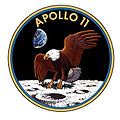
The media paid fitting tribute this weekend to Neil Armstrong, the first man on the moon, who died Saturday at age 82.
News of his passing got me thinking about the contributions of NASA and the space program to health care.
 Armstrong’s feat was the climax of President Kennedy’s goal to put a man on the moon by the end of that decade. In the early 1960s, the U.S. was riding high – there was nothing, we thought, that was impossible. However, it would take immensely creative thinking, creation of new materials, and constant innovation. NASA was also charged with benefitting humankind from the experiments and new products developed through the program.
Armstrong’s feat was the climax of President Kennedy’s goal to put a man on the moon by the end of that decade. In the early 1960s, the U.S. was riding high – there was nothing, we thought, that was impossible. However, it would take immensely creative thinking, creation of new materials, and constant innovation. NASA was also charged with benefitting humankind from the experiments and new products developed through the program.
So what has 50 years of “the Right Stuff” done for health?
For starters, how about food preservation? Freeze dried and reconstituted food were the only meals in space. This led to new ways to feed hungry people all over the world with nutritious meals that would not spoil in heat, or without refrigeration. And of course, who can forget Tang?
The heat shields on the capsules had to be incredibly thin, light, and strong, able to withstand the punishment of thousands of degrees created by the friction of re-entry. My father-in-law was part of NASA’s Glenn Research Center (formerly Lewis) and helped develop the shields for John Glenn’s Mercury capsule and other space missions. The need to find the tiniest flaws in metals and materials led to the development of the CAT Scanners and MRI machines for diagnostic purposes in thousands of hospitals and facilities worldwide.
That same research center was instrumental in creating the Emergency Medical System (EMS) Communication Technology, based on space telemetry. And let’s not forget
- Apollo missions resulted in new ways to purify water and measure bacteria levels – a direct benefit to public health all over the planet.
- NASA engineers collaborated with Dr. Michael DeBakey to adapt fuel pump technology for use in the artificial heart.
- Breast biopsies are performed more accurately thanks to a system using advanced digital camera technology that allows for more precise removal of tissue for testing. The same technology was first used in the Hubble Space Telescope.
- Tiny, ultra thin leads to implantable defibrillators were developed from a NASA project.
- NASA’s light technology helps alleviate side effects of chemotherapy and radiation in cancer patients.
Infrared cameras, ultrasound, laser angioplasty, cardiac imaging systems, pacemakers, implantable pumps for diabetics, and kidney dialysis machines are just some of the thousands of spinoffs of the space agency’s technology.
We have a lot to thank Neil Armstrong and all of the NASA innovators for what they have accomplished over these past 50 years or so. From a health care perspective, it certainly has been “one giant leap for humankind.”








